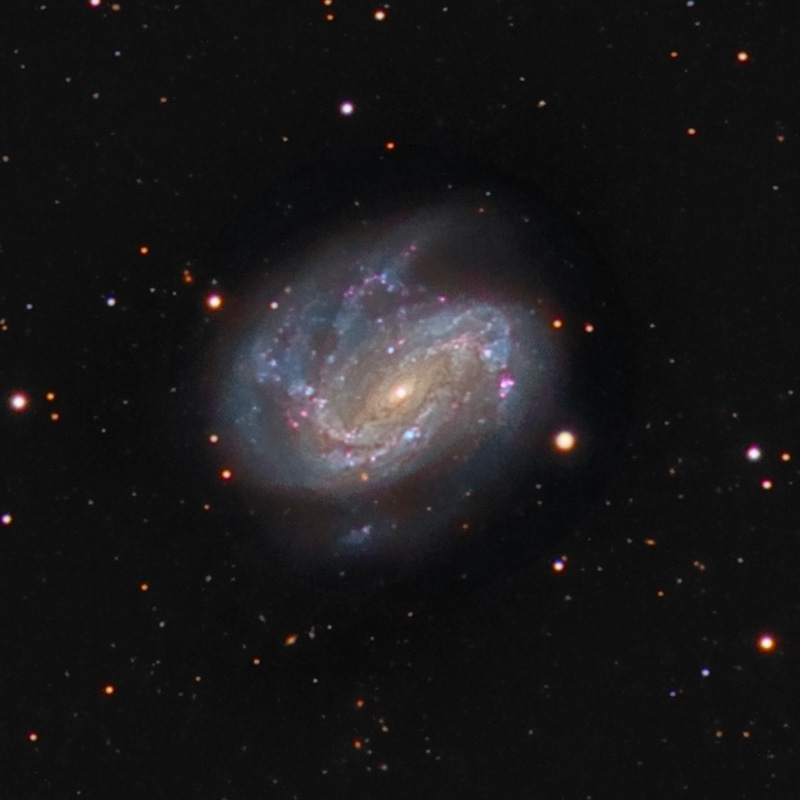| Description | Images |
Object name: NGC4051Designation(s): NGC4051, NGC 4051 is a very well studied spiral in Ursa Major only some 43 to 46 million light-years away. It is considered midway between a true spiral and a barred spiral by some sources. It is one of 6 galaxies Carl Seyfert studied in 1943 that later became classic Seyfert Galaxies. While most sources consider it a Seyfert 1 galaxy I find papers say it is 1.25, 1.5 and 1.8 among other definitions. The Seyfert classification can be considered a quasar that is no longer active enough to meet that definition but still has an active supermassive black hole. It is considered one of the least luminous core Seyfert's known. While the Seyfert designation refers to the activity of the black hole at its center I was pleasantly surprised at how many HII regions popped out in my simple LRGB image without the need to use any H alpha light to bring them out. One region, however, appears white. This caused many galaxy catalogs to pick it up as a galaxy. It is noted as ASK 318879.0 in the annotated image but has many other galaxy designations. Still, NED says it is an HII region, not a galaxy and its redshift is similar to that of NGC 4051. On the other hand ASK 318868.0 in the southern part of the galaxy appears to be a true galaxy at 72 million light-years. Related Designation(s):1159+44W01, 1ES 1200+448, 1H 1205+440, 1RXP J120310.2+443156, 1RXS J120308.9+443155, 2MASS J12030960+4431527, 2MASX J12030968+4431525, 2PBC J1203.1+4430, 2XMM J120309.5+443152, 2XMMp J120309.5+443152, 6C B120036.6+444841, 87GB 120038.5+444901, 87GB[BWE91] 1200+4448, AKARI J1203098+443155, B3 1200+448, CG 1500, CGCG 1200.6+4448, CGCG 243-038, EUVE J1203+44.5, HDCE 0706 NED028, IRAS 12005+4448, IRAS F12006+4448, LDCE 0867 NED065, LGG 269:[G93] 004, LQAC 180+044 006, MCG +08-22-059, NGC 4051, NGC 4051:[LB2005] X01, NGC 4051:[RW2000] X-01, NGC4051, NSA 140667, NVSS J120309+443154, PGC 038068, RBS 1060, RX J1203.1+4431, RX J1203.1+4431:[BEV98] 036, RX J1203.1+4431:[ZEH2003] 01 , RX J1203.1+4432, SDSS J120309.61+443152.6, SSTSL2 J120309.60+443152.8, SWIFT J1203.0+4432, SWIFT J1203.0+4433, UGC 07030, UMa Cluster:[PRL2014] U116, USGC U480 NED43, UZC J120309.5+443155, XSS J12032+4424, [AHG2014] B166, [dML87] 650, [GL2009] 42, [KRL2007] 105, [M98j] 170 NED31, [RRP2006] 22, [TES2010] 200, [VCV2001] J120309.6+443153, [VCV2006] J120309.6+443153, [WMR2009] 085, |


